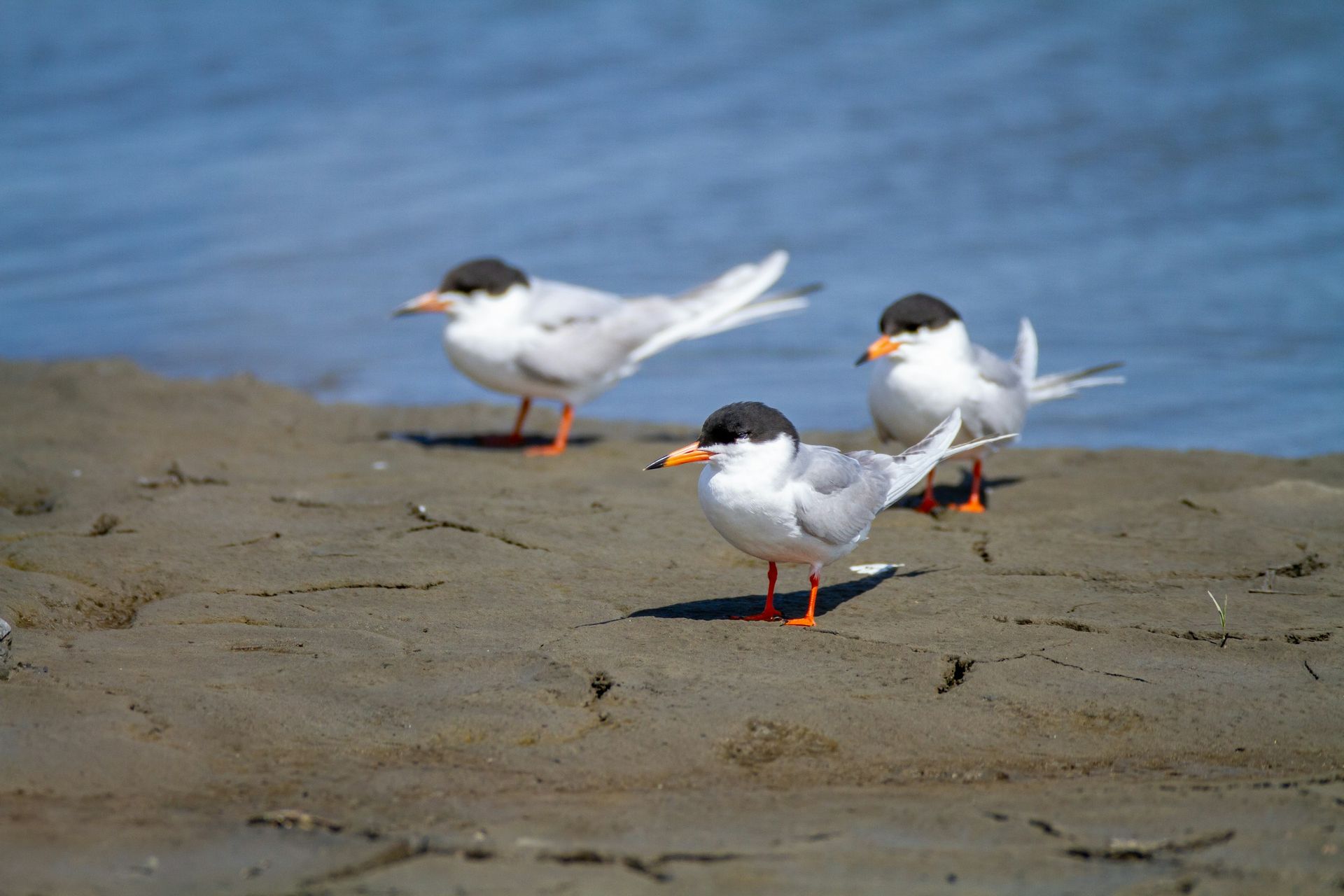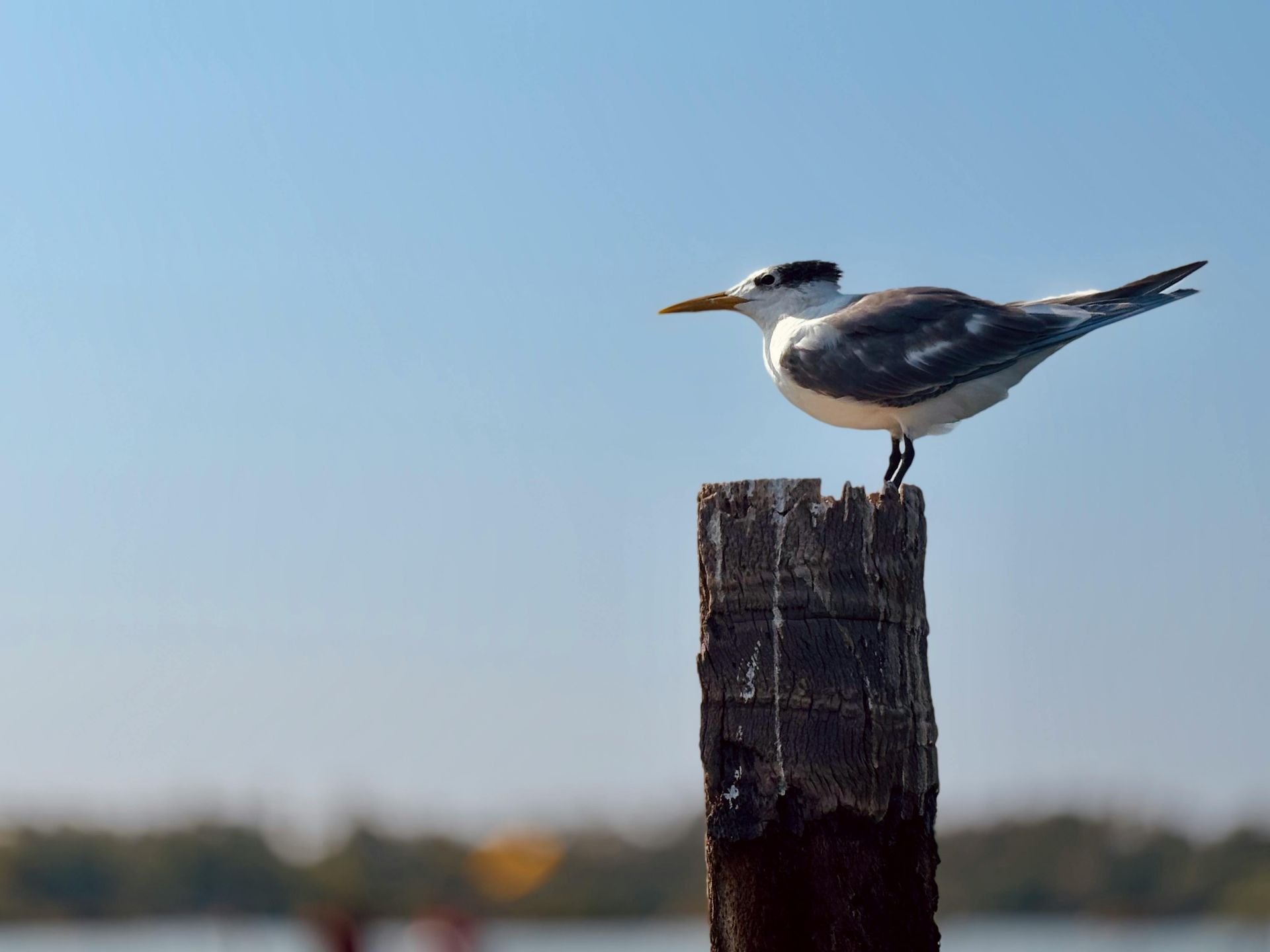Terns are sleek, graceful seabirds known for their long, pointed wings, forked tails, and sharp beaks. Found along coastlines, rivers, and lakes worldwide, terns are expert hunters that feed primarily on small fish and aquatic invertebrates. They play an essential role in marine ecosystems by controlling fish populations and serving as indicators of water health.
Terns are medium-sized birds, typically measuring 12-15 inches in length with wingspans ranging from 25-30 inches. Their plumage is usually white with black caps on their heads and gray or white bodies. Common species in North America include the Least Tern and the Caspian Tern.
Terns are highly social birds, nesting in large colonies on sandy beaches, rocky islands, or grassy shores. They lay 1-3 eggs per clutch in shallow scrapes on the ground, relying on their cryptic coloration for protection. Both parents participate in incubation and feeding the chicks, which fledge after a few weeks.
Natural predators include gulls, foxes, and raccoons, while human-related threats such as habitat destruction, pollution, and disturbance pose significant risks. Despite these challenges, terns remain resilient and are frequently seen diving gracefully into the water in pursuit of prey.

For your safety and the well-being of wildlife, please observe animals from a distance and avoid touching or disturbing them. If you encounter an animal that appears injured or in distress, contact a licensed wildlife rescue organization for guidance before intervening.
Found An Animal? Not sure how to help a wild animal in need? Learn when to step in, who to call, and how to help safely.
Did You Know?
- The Arctic Tern holds the record for the longest migration of any bird, traveling over 22,000 miles each year between the Arctic and Antarctic.
- Terns have exceptional eyesight, allowing them to spot fish from high above the water.
- Unlike gulls, terns hover briefly before plunging headfirst into the water to catch prey.
- Caspian Terns are the largest terns in the world, with wingspans exceeding 50 inches.
- Terns have been observed stealing fish from each other mid-flight.
- Their forked tails help them maneuver with precision during flight.
- During courtship, male terns present fish to females as part of their mating ritual.
- Terns often form mixed-species colonies, nesting alongside other seabirds for added protection.
- A group of royal terns is called a “highness” of terns.
- A royal tern remains with its parents for as long as eight months after hatching, an unusually long period for birds.
Problems Faced In The Wild
- Habitat Loss: Coastal development reduces critical nesting and foraging areas.
- Pollution: Oil spills and chemical contaminants harm terns and reduce prey availability.
- Climate Change: Rising sea levels and altered weather patterns affect nesting success.
- Human Disturbance: Recreational activities on beaches can disrupt nesting colonies.
- Predation: Eggs and chicks are vulnerable to predators such as foxes and gulls.
- Fishing Gear Entanglement: Discarded nets and lines pose serious risks to diving terns.
Tips For Cohabitation
- Protect Coastal Habitats: Support conservation efforts that preserve nesting areas.
- Reduce Beach Disturbance: Avoid approaching tern colonies during the breeding season.
- Dispose of Fishing Gear Properly: Prevent entanglement by keeping waterways clean.
- Minimize Light Pollution: Reduce artificial lighting near coastal areas to maintain natural behaviors.
- Participate in Citizen Science: Help monitor tern populations and report sightings.
- Educate Others: Share the importance of terns in marine ecosystems and how to protect them



